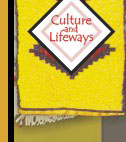 Heritage Community Foundation Presents
Heritage Community Foundation PresentsAlberta Online Encyclopedia
 |
 |
||
|
|
 |
Home | About Us | Contact Us | Partners | Sitemap |
|
|
|
 |
||
   |
|||
|
Food/Provisions Native people who obtained subsistence from hunting and gathering activities moved seasonally in search of food. For example, the Chipewyan, who lived in the boreal forest west of Hudson Bay, moved onto the tundra to hunt caribou. At other times, they remained in the woodlands to fish, and to hunt moose and bear. Snaring smaller animals such as beaver and rabbit was also common place. During warmer seasons, family-based Cree bands travelled by canoe in search of food. In winter they travelled by toboggan and snow shoe. Typically their food source included woodland caribou, moose, duck, geese, and fish. The Objibwa, who had access to abundant hunting and fishing grounds were not as nomadic as some other Native groups. They established a semi-sedentary culture by building birch bark dwellings. In addition to a predominately high protein diet, the Ojibwa harvested wild rice. Ojibwa women harvested wild rice, which grew along the marshy shores of rivers and lakes. The women shook the ripe ends of the rice into the bottom of their small canoes. Afterwards, rice was parched and stored in fawn bags. In the springtime, Native women also made maple sugar. Plains Native groups such as the Assiniboine and the Blackfoot Confederacy (Peigan, Blood, and Siksikaw) made buffalo their staple food. Naturally, they hunted other game and they fished. The Assiniboine had a custom of using hot stones to boil meat in hide bags. Native babies were nursed until they were old enough to eat adult fare, which meant children were nursed until their teeth came in. While Native peoples' food supply was fairly reliable, especially during warmer months, they were aware of nature's cycles and nature's periods of severe scarcity. Native women planned ahead for periods of scarcity by preserving fish and meat.The Ojibwa, Cree, and Chipewyan preserved fish, moose, and caribou by drying these meats over their fires. The Assiniboine and Blackfoot preserved buffalo meat by turning it into pemmican. According to historian John Thompson Herd, these Canadian Native groups were better nourished than European peasants living in the same historical period. Archaeological evidence indicates that the Assiniboine and the Cree traded fur hides and preserved meats for corn, bean, and squash with the Mandan, Arikara, and Hidatsa to the south. |
|
||
|
|
|||
 |
 |
 |
 |
For more on Métis Alberta, visit Peel’s Prairie Provinces.